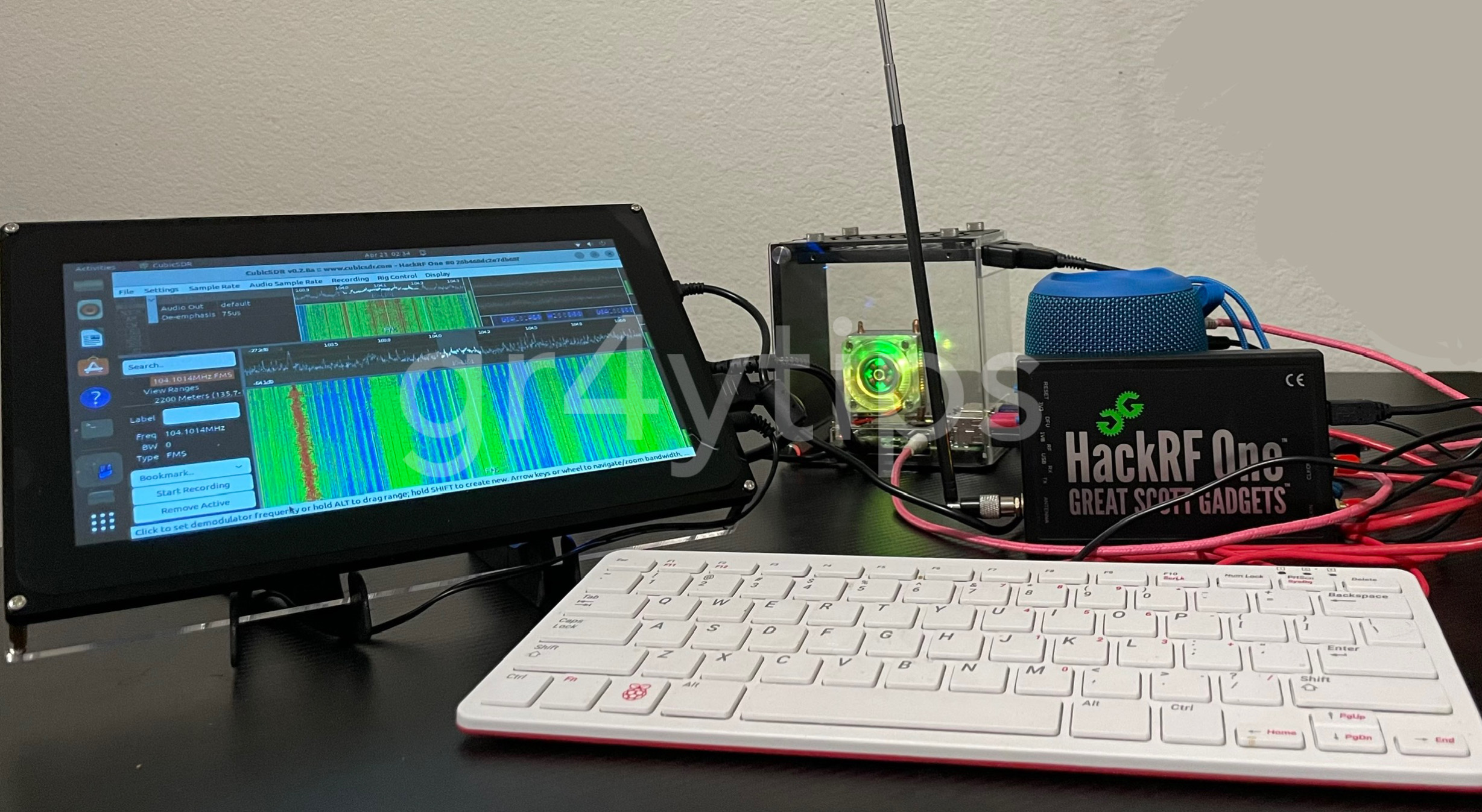Install CubicSDR on Ubuntu Desktop 22.04.2 LTS | Raspberry Pi 4
Author: admin | Category: CubicSDR, HackRF, Software Defined Radios (SDR) | 1 Comment

SDR-Studio
We will learn how to Build and install CubicSDR (A Cross-Platform Software-Defined Radio Application) from source on Ubuntu 22.04.2 running on Raspberry Pi 4.
Install Basic build support:
$ sudo apt-get install git build-essential automake cmake
Install Base Dependencies:
$ sudo apt-get install libpulse-dev libgtk-3-dev
Install OpenGL Dependencies
$ sudo apt-get install freeglut3 freeglut3-dev
Build and install SoapySDR
$ mkdir ~/Works
$ cd ~/Works
$ sudo rm -rf SoapySDR
$ git clone https://github.com/pothosware/SoapySDR.git
$ cd SoapySDR
$ mkdir build
$ cd build
$ cmake ..
$ make
$ sudo make install
$ sudo ldconfig
Download and Install Driver for SDRPlay RSP devices:
From https://www.sdrplay.com/downloads/ – Download ARM Ubuntu specific API & Driver – 64 bit.
Make the file executable:
$ sudo chmod 755 ./SDRplay_RSP_API-ARM64-3.07.1.run
Run the file:
$ ./SDRplay_RSP_API-ARM64-3.07.1.run
Build and Install SoapySDRPlay:
$ cd ~/Works
$ sudo rm -rf SoapySDRPlay
$ git clone https://github.com/SDRPlay/SoapySDRPlay.git
$ cd SoapySDRPlay
$ mkdir build
$ cd build
$ cmake ..
$ make
$ sudo make install
$ sudo ldconfig
Okay, now let us Check the SoapySDR installation:
SoapySDRUtil –info
SoapySDRUtil –probe=”driver=sdrplay”
Build and Install Hamlib libraries:
Download hamlib-3.3.tar.gz from: https://sourceforge.net/projects/hamlib/files/hamlib/3.3/ and
copy to ~/Works
$ cd ~/Works
$ sudo apt remove libhamlib2
$ tar -zxvf hamlib-3.3.tar.gz
$ cd hamlib-3.3
$ ./configure –prefix=/usr/local –enable-static
$ make
$ sudo make install
$ sudo ldconfig
Build and install liquid-dsp:
$ cd ~/Works
$ git clone https://github.com/jgaeddert/liquid-dsp
$ cd liquid-dsp
$ ./bootstrap.sh
$ CFLAGS=”-march=native -O3″ ./configure –enable-fftoverride
$ make
$ sudo make install
$ sudo ldconfig
Build static wxWidgets:
$ cd ~/Works
$ wget
https://github.com/wxWidgets/wxWidgets/releases/download/v3.1.3/wx
Widgets-3.1.3.tar.bz2
$ tar -xvjf wxWidgets-3.1.3.tar.bz2
$ cd wxWidgets-3.1.3/
$ mkdir -p ~/Works/wxWidgets-staticlib
$ ./autogen.sh
$ ./configure –with-opengl –disable-shared –enable-monolithic
–with-libjpeg –with-libtiff –with-libpng –with-zlib –disablesdltest –enable-unicode –enable-display –enable-propgrid —
disable-webkit –disable-webview –disable-webviewwebkit —
prefix=echo ~/Works/wxWidgets-staticlib CXXFLAGS=”-std=c++0x”
$ make
$ make install
Build CubicSDR with Hamlib and ALSA support:
$ cd ~/Works
$ git clone https://github.com/cjcliffe/CubicSDR.git
$ cd CubicSDR
$ mkdir build
$ cd build
$ cmake ../ -DCMAKE_BUILD_TYPE=Release –
DwxWidgets_CONFIG_EXECUTABLE=~/Works/wxWidgets-staticlib/bin/wxconfig -DUSE_HAMLIB=1 -DUSE_AUDIO_PULSE=0 -DUSE_AUDIO_OSS=0 –
DUSE_AUDIO_ALSA=1 -DOTHER_LIBS=”-latomic”
$ make
$ sudo make install
Launch CubicSDR
$ cd x64/
$ sudo ./CubicSDR

How is heat management with this setup?
I have the 4gb and 8gb models of the RPI 4, but with one in in an Argon One actively cooled case, running Dragon OS, the CPU was always at 50%+ and after a few days running the case was almost to hot to comfortably handle.
An old HP Quadcore took up the job, but I wouldn’t mind going back to the RPI 4.